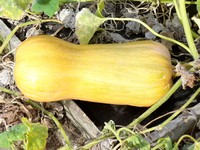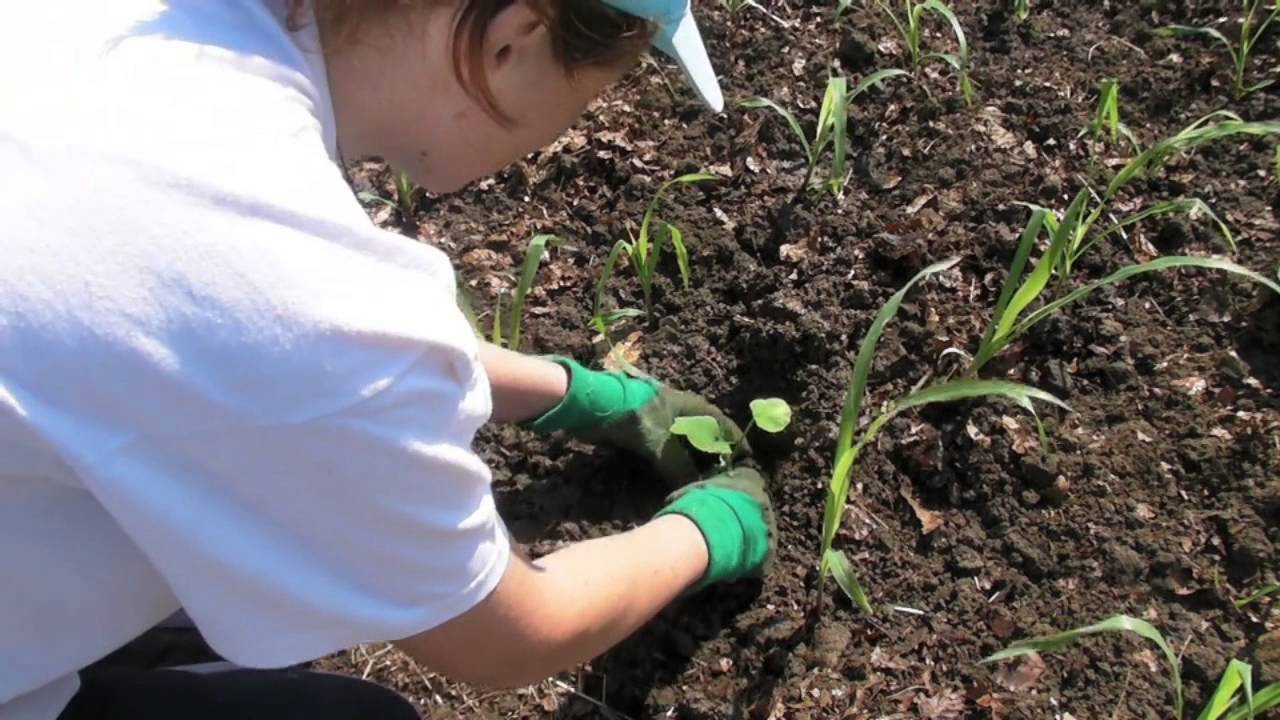How to Grow Butternut Squash Organically
Growing butternut squash – and all winter squash for that matter – is a great way to get your veggies well into fall. It is known as winter squash because it is one of the last vegetables harvested before the fall frost. (Note: The advice on this page applies to most types of winter squash)

You’ll find that its flavor is similar to that of other fall favorites, like pumpkin and other winter squash. It can be prepared in many different ways, from savory to sweet.
Growing Butternut Squash: Plant Snapshot (Curcurbita Moschata)
- Family: Gourd
- Annual or Perennial? Annual – Ready to harvest 75 to 120 days after planting
- Recommended varieties: Neck, Really Big Hybrid, Waltham, Pennsylvania Dutch Crookneck
- Cold tolerance: Warm Season – Will does not survive frost and their seeds will not germinate in cold soil. Plant them at about the average date of the last 32 degrees F (0 degrees C) temperature in spring
- Required Sun: Full sun (at least 6 hours each day)
- When planning vegetable crop rotation, group with crops from this family: Other squash
Companion plants of Butternut Squash
- Companions: Corn, onion, eggplant, marigold, nasturtium, radish
- Avoid: Potato
When to Plant Butternut Squash
Butternut squash can require 100 days or more to mature, so they must be planted in early summer in order to be harvested before the first frost. If they are left out to experience the first frost, the fruits will be damaged.
Butternut squash requires warm, fertile soil that must drain well, so some sand is required in your soil mix. Because of the long time to maturity and the fact that neither the plants nor fruits can tolerate frosts, you must plant your squash as soon as possible in many areas. You can also start seeds indoors before the last frost date and move the seedlings to the garden after the danger of frost has passed.
The long growing season of butternut squash – like all winter squash – produces huge fruits that require plenty of water and nutrients. When preparing the soil, be sure to use plenty of compost that’s tilled at least a couple of feed into the soil. Adding seaweed will give them an even greater boost.
Butternut Squash Spacing
Butternut squash’s size also requires plenty of room to grow. It should be planted in a way that allows enough space between plants to allow for trailing vines and large fruits – 18 to 36 inches depending on the variety.
If you’re not careful, butternut squash will take over your garden… it’s a vine, after all. To avoid this, plant it at your garden’s edge and keep the vines trimmed and angled in a way that they won’t affect surrounding crops.
Snapshot: Planting Butternut Squash
- Planting depth: ½ inch -1 inch deep for seeds (1.3-2.5 cm)
- Spacing in rows: 18 inches apart – 24-36 inches for varieties with very large fruit. (45.7/61-91.4cm)
- Germination soil temperature: 70 to 95 degrees F (17 degrees C)
- Days to germination: 5 to 10 days
Growing Butternut Squash: From Germination to Pre-Harvest
Butternut squash is not difficult to grow, but like other squash, the plants are subject to fungus and must be watched carefully during the growing season. They like hot temperatures and require full sun like most vegetables. As mentioned above, they will perform best in fertile, consistently moist, and well-drained soil.
They should also be checked for pests such as pickle worms regularly. Simply pick the pests off the vines and fruits.
In order to maintain warm soil temperatures and to ward off pests and garden weeds, many winter squash growers use row covers made of black or IRT plastic or landscape fabric with holes cut out that allow the squash to come through.
Snapshot: Growing Butternut Squash
- Preferred soil pH: 5.5 to 7.5
- Growing soil temperature: 70 to 95 F (21 to 35 degrees C)
Growing Butternut Squash: Harvesting Time
Butternut squash will be ready to harvest between 75 and 120 days after germination. You’ll know it’s ready when fruits are between beige and light tan. If there is still a greenish tint to the fruit, it’s not ready yet. Ready-to-harvest butternut squash also has shriveling and drying stems and extremely hard skin.
To remove them from the garden, cut the stems about an inch (2.5 cm) up from the fruit. The fruits are too heavy for the stem to bear its weight, so DO NOT handle the harvested fruit by the stem.
It is critical to harvest all the squash before the first heavy frost to avoid damage to the fruits. When you harvest your butternut squash, be certain to leave a little of the stem attached to the fruit if you plan to store them.
Storing Butternut Squash and Freezing Butternut Squash
Once harvested, butternut squash and other winter squash keep for long periods of time. In fact, you’ll notice that the squash has a sweeter and milder flavor after about two months of storage than they have just after harvesting.
Butternut squash can be stored for several months if kept in a moderately warm, dry place. If you plan to store the squash, leave a little of the stem attached to the fruit and let it lie out in the sun for a few days after harvesting. Do not wash squash that you plan to store.
Stored in a cool, dry place, they will often last for months.
Snapshot: Storing Butternut Squash & Freezing Butternut Squash
- Storage temperature: 55 to 60 F (12.7 to 15.5 degrees C)
- Humidity: 60 to 70% relative humidity
- Storage life (left whole, stem attached, in above conditions): 4 to 5 months
- Storage life (cooked and frozen): up to 3 months
- Seed longevity: About 4 years
Growing Butternut Squash: Pests & Diseases
The following pests and diseases have been known to affect the success of growing Butternut Squash. For more information about preventing and controlling them, see Organic Garden Pest Control.
Butternut Squash Pests
Aphids, Armyworms, Crickets, Cucumber Beetles, Cutworms, Darkling Beetles, Driedfruit Beetles, Earwigs, Flea beetles, Grasshoppers, Leafhoppers, Leafminers, Loopers, Nematodes, Seedcorn maggots, Snails/Slugs, Spider mites, Squash bugs, Stink bugs, Thrips, Whiteflies, Wireworms
Butternut Squash Diseases
Curly Top, Damping Off, Downy Mildew, Fusarium Crown and Foot Rot, Powdery Mildew, Root Rot, Verticillium Wilt, Viruses, White Mold

